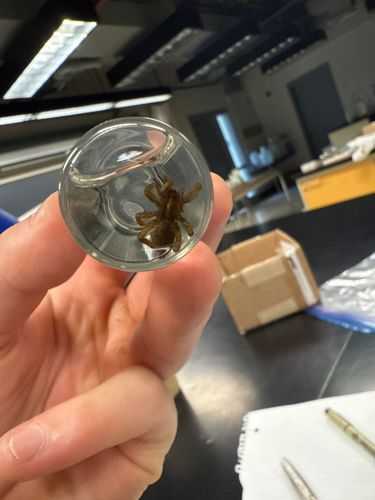Trapdoor spider
Scientific Name: Various genera within the family Ctenizidae (and other related families like Nemesiidae, Migidae)
Order & Family: Order Araneae, Family Ctenizidae (or Nemesiidae, Migidae, depending on specific species)
Size: Body length typically 1.0 to 3.0 cm (0.4 to 1.2 inches), with leg spans up to 5-7 cm for larger species.

Natural Habitat
Typically found in burrows they construct in the ground, often with a hinged lid of silk and soil. They prefer wooded or vegetated areas with suitable soil for burrowing.
Diet & Feeding
Mainly opportunistic predators, feeding on insects, other spiders, and small invertebrates that wander near their burrow entrance.
Behavior Patterns
Solitary, nocturnal predators. They spend most of their lives in their burrows, ambushing prey by waiting with their trapdoor slightly ajar. When prey passes, they lunge out, capture it, and retreat quickly into their burrow. They are known for their longevity, with some females living for many years.
Risks & Benefits
Generally not aggressive towards humans, but can bite if provoked or cornered. Their venom is typically not considered medically significant to humans, causing localized pain and swelling. Ecologically, they help control insect populations.
Identified on: 9/19/2025